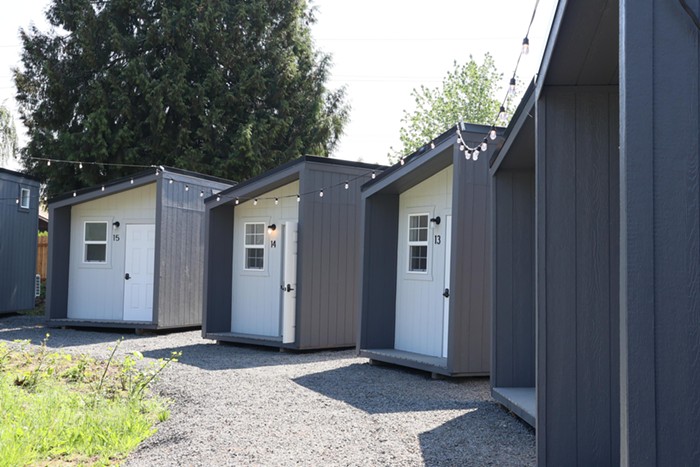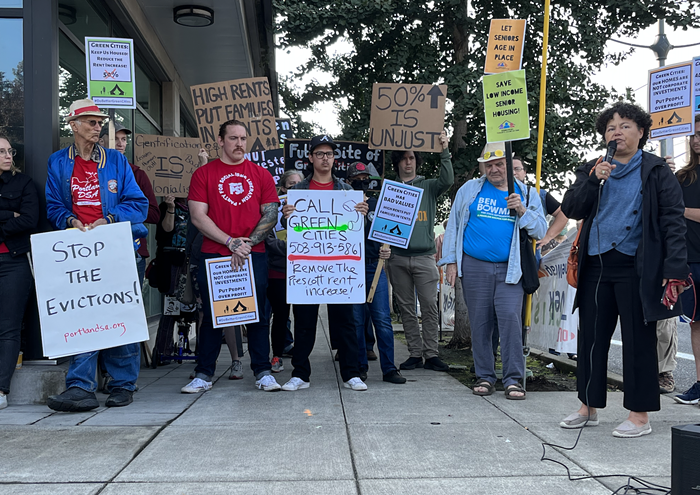Oregon schools are finally getting free lunches for low-income students and full-day kindergarten for everyone, but will $7 billion be enough to fully fund K-12 education?
The Oregon House of Representatives on Tuesday passed in a party-line vote House Bill 5017, funding Oregon K-12 schools with $7.255 billion for the 2015-17 biennium.
Two notable investments—funding for full-day kindergarten and $10 $2.5 million to provide free lunches to children eligible for reduced-price lunches—as well as $12.5 million to improve support for students learning English as a second language, were included in the bill.
Democrats claim (a sorta wishy-washy) victory for the children, saying the budget will provide “stability for most school districts,” while Republicans are ashamed that Dems voted to “shortchange Oregon’s schools.”
Local children's advocates' opinions seem tepid, at best, about the bill's passage.
“This really isn’t much of a budget increase and though it’s a step in the right direction, many districts will still experience budget cuts, which is troubling, said Children First Executive Director Tonia Hunt. “On a large scale, our state needs to make a significant investment in education and this is not that.”
According to Department of Education data, state funding per student has decreased significantly in the last 25 years. The department distributes money to schools based on Weighted Average Daily Membership, which is per-pupil funding that considers factors such as students with special education needs and students for whom English is a second language.
According to Department of Education calculations (adjusted for inflation), in 1990, the state spent about $4,100 per pupil. In 2014, the state spent about $3,400 per pupil.
“We have been fighting to get our schools back on track for years, and today’s investment is another step in the right direction,” said Rep. Peter Buckley (D-Ashland), the House’s chief budget writer. “But it’s still not enough … We must address the unstable revenue system that has caused our schools to be underfunded for decades.”
HB 5017's budget is a $600 million increase from last biennium, and is slightly more than the originally proposed $7.235 billion. The 2015-17 biennium will also represent the first time Oregon schools will see a pre-recession level of K-12 funding.
That said, Oregon performs poorly compared to other states: Only 69 percent of Oregon students graduate from high school—representing the second worst graduation rate in the nation—according to information provided by nonprofit group Children First For Oregon.
“Today, House Democrats chose to put politics ahead of kids by voting for an underfunded education budget, despite and additional $1.8 billion in revenue in the General Fund this biennium,” said Rep. Mike McLane (R-Powell Butte). “Rather than responsibly prioritize the needs of students and teachers, House Democrats purposefully shortchanged schools so they could move forward later with their predictable demand for increased taxes and keeping the kicker.”
The "kicker" is an automatic tax rebate returned to citizens if, following a May revenue forecast, the collected revenue is more than the projected revenue by at least 2 percent. McLane is suggesting that Democrats would try and claim that money to supplementally fund schools instead of returning it. House Speaker Tina Kotek's office reported that HB 5017 includes a trigger that will send 40 percent of any new revenue to the State School Fund if the economy continues to show improvement. Not only that, but Toya Fick, executive director of nonprofit Stand For Children Oregon, said her group would lobby for a chink of the personal kicker, if one is triggered.
“Luckily, this budget is the floor and it can only go up from here” Fick said. “Stand will also work really hard to block the personal kicker because it is irresponsible policy, and doing so would guarantee districts will not have to cut days or staff over the next two years.”
Hunt agreed that the proposed budget amount is an improvement, but emphasized that Oregon should take a long-term approach to school funding.
"We need to make a decision, as a state, about whether we want exceptional schools for our kids, or whether we're willing to accept what we have," she said.


















